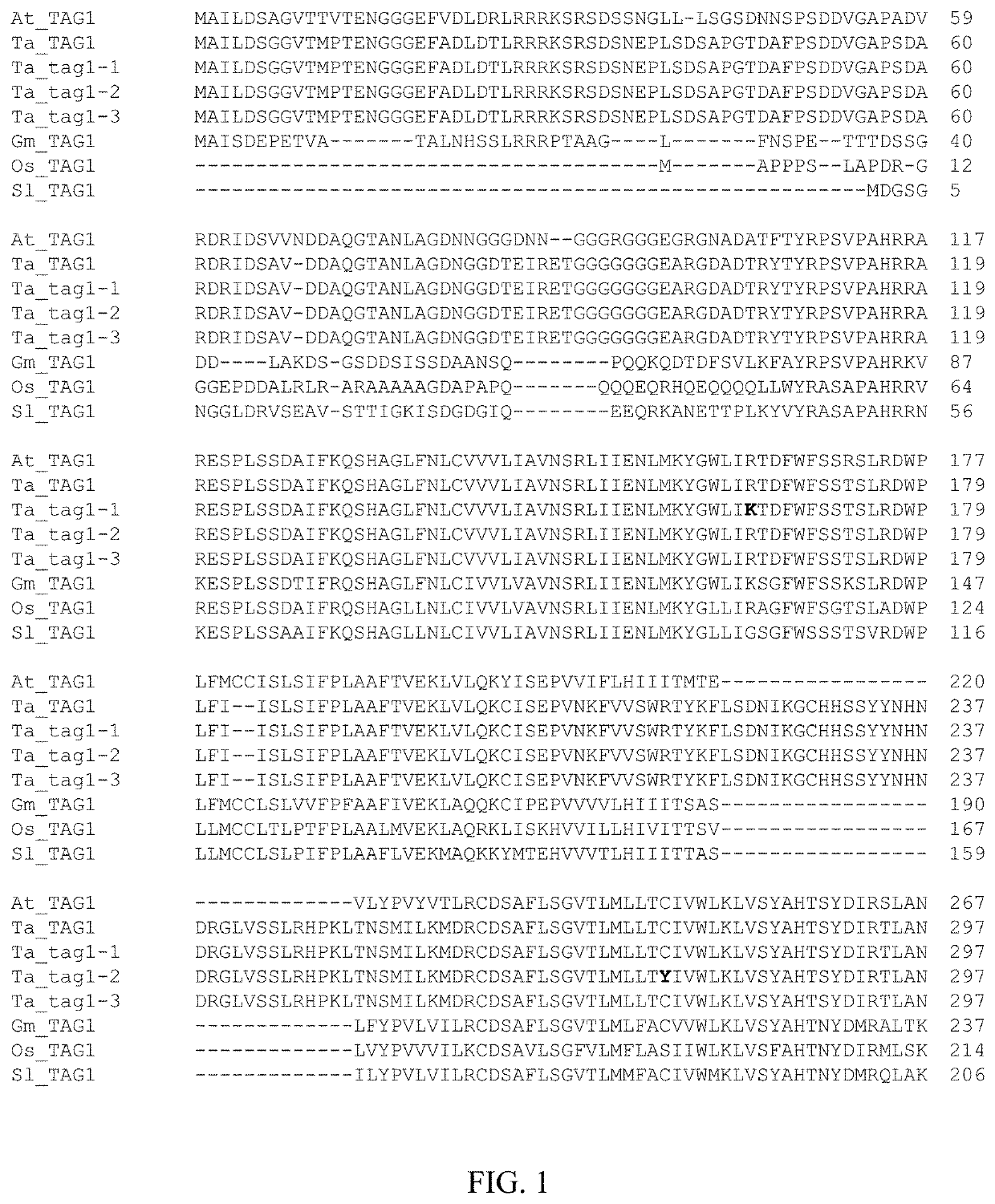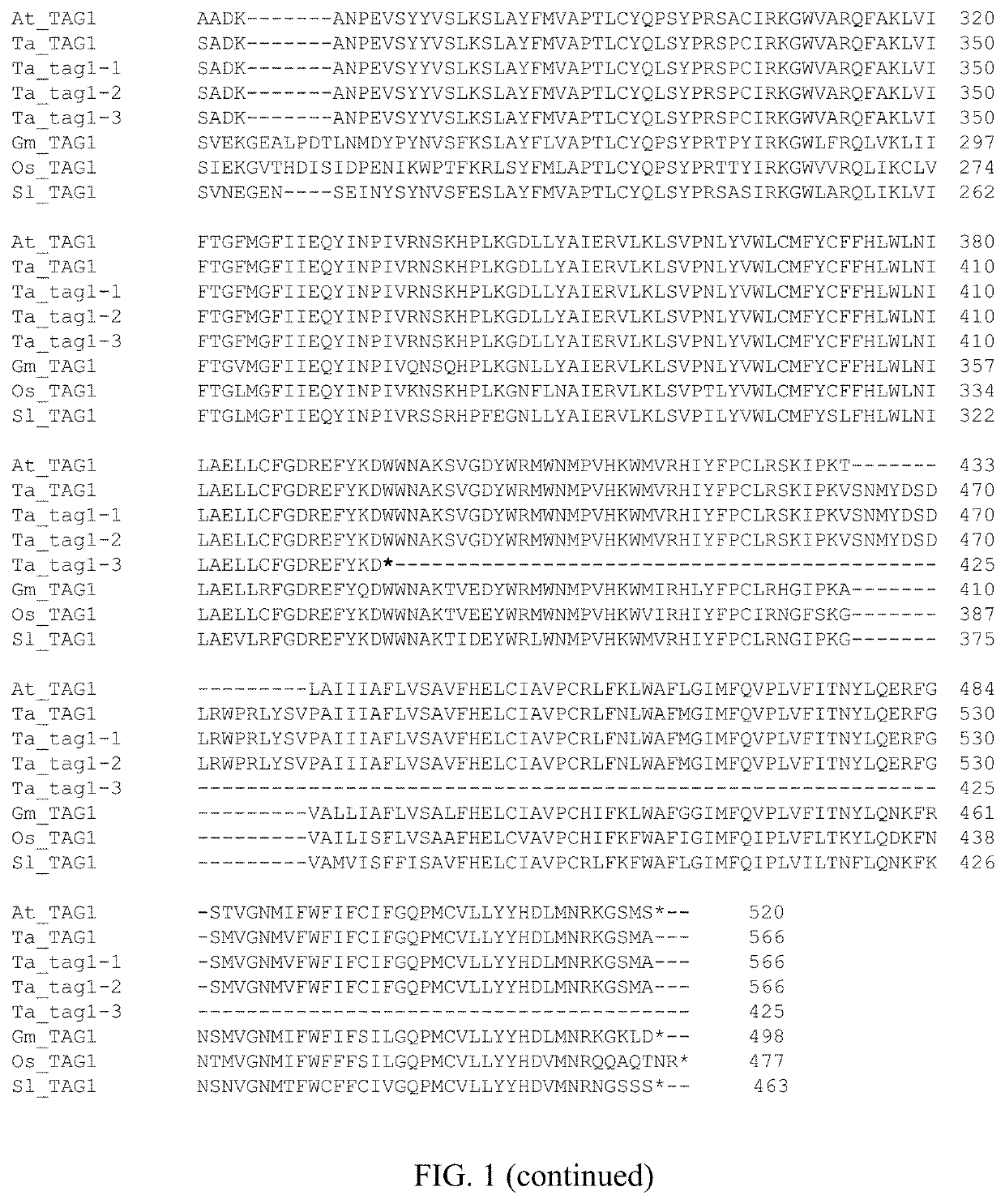Plants having increased oil quality
a technology of plants and oil, applied in the field of oil-based plants, can solve problems such as the destruction of rain forests
- Summary
- Abstract
- Description
- Claims
- Application Information
AI Technical Summary
Benefits of technology
Problems solved by technology
Method used
Image
Examples
example 1
n of Pennycress Plants Having Increased Levels of One or More Saturated Fatty Acids, Increased Levels of One or More PUFAs, and Decreased Levels of Oleic Acid
[0077]The plant oil pathways have been well studied in plants leading to a good understanding of most of the steps needed to produce triglycerides in the seeds for the storage of energy (see, e.g., Baud et al., 2010 Prog Lipid Res. 49:235-49). This study used a mutagenesis approach to create changes in Thlaspi arvense (pennycress) genes required for seed oil biosynthesis, and to identify modifications resulting in improvements in the oil produced in the pennycress seeds.
Materials and Methods
Mutagenesis of Pennycress
[0078]Seeds of wild type pennycress seeds were treated with 0.2% ethyl methane sulfonate (EMS) for 18 hours. After extensive washing the seeds were planted into outdoor fields during the late summer or early fall to produce an M1 generation of mutagenized plants. In the spring the plants produced stems and flowers on...
example 2
of Double and Triple Mutant Pennycress Plants Having Increased Levels of One or More Saturated Fatty Acids, Increased Levels of One or More PUFAs, and Decreased Levels of Oleic Acid
[0085]To explore the ability to improve and widen the utility of the Tatag1 oils, the Tatag1-3 line was crossed with a Tafad2-2 mutant containing elevated levels of erucic acid, a Tafae1-1 mutant, or a Tarod1-1 mutant as described elsewhere (see, e.g., WO 2018 / 140782, and International Application No.: PCT / US2018 / 015536, filed Jan. 26, 2018). Double and triple homozygous mutants showed wild type or increased levels of one or more saturated fatty acids, wild type or increased levels of one or more PUFAs, and / or increased or levels of oleic acid, and / or increased or decreased erucic acid (FIG. 2).
[0086]The double Tafae1-1 Tatag1-3 line produced an increased level of linoleic acid and an increased level of linolenic acid. This oil has similar features as high PUFA soybean or sunflower oil.
[0087]The double Ta...
example 3
d Profiles of Pennycress Plants Having Modified Triglyceride Synthesis
[0090]The fatty acid profiles of oil from pennycress plants having modified triglyceride synthesis as compared to wild type pennycress plants were determined.
Materials and Methods
Seed Source and Segregating Populations
[0091]Mutants characterized were derived from an EMS population. One allele from three genes—TAG1 (tag1-3) (Trp426Stop), FAD2 (fad2-2) (Gly141Asp), FAE1 (fae1-1) (Gln340Stop), and ROD1 (rod1-1) (Met226Ile) were selected. Crosses were performed between EMS lines having a tag1-3 allele with a rod1-1 allele, fae1-1, and fad2-2 allele. F1 plants were tested for the heterozygous mutations in the respective crosses and plants were grown to complete maturity to produce F2 seeds for further analysis. Homozygous F2 plants were isolated using allele-specific markers tag1-3 / fae1-1 and tag1-3 / rod1-1. To isolate homozygous F2 seeds of tag1-3 / fad2-2 combination a single seed method was used as described in FIG. 19...
PUM
| Property | Measurement | Unit |
|---|---|---|
| wavelengths | aaaaa | aaaaa |
| wavelengths | aaaaa | aaaaa |
| volume | aaaaa | aaaaa |
Abstract
Description
Claims
Application Information
 Login to View More
Login to View More - R&D
- Intellectual Property
- Life Sciences
- Materials
- Tech Scout
- Unparalleled Data Quality
- Higher Quality Content
- 60% Fewer Hallucinations
Browse by: Latest US Patents, China's latest patents, Technical Efficacy Thesaurus, Application Domain, Technology Topic, Popular Technical Reports.
© 2025 PatSnap. All rights reserved.Legal|Privacy policy|Modern Slavery Act Transparency Statement|Sitemap|About US| Contact US: help@patsnap.com



